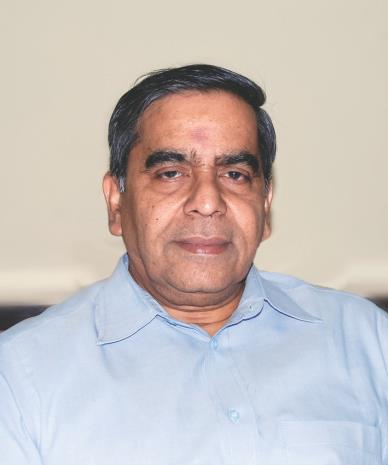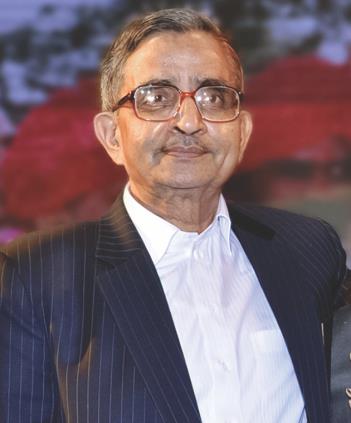Would the amalgamation of various indirect taxes in one common tax really create a common market and relieve the tax payers from cascading effect of multiple taxes at multiple points without altering the ease of doing business and burdening the consumers’ pocket? Here is what the paper industry feels about GST:
An over 16-year run is about to see its finish line. The Constitution (One Hundred and Twenty-Second Amendment) Bill, 2014, also known as the Goods and Services Tax Bill or GST Bill, was passed by the Rajya Sabha on 3 August 2016, and the amended bill was passed by the Lok Sabha on 8 August 2016. Now, the ratification by a minimum of 15 states will make the Bill see the daylight by becoming an act. Touted as the biggest indirect tax reform in India, GST is being seen by many as a game changer for Indian economy by developing a common Indian market and reducing the cascading effect of tax on the cost of goods and services. The Government is all set to implement GST by April 2017, replacing all the indirect taxes levied on goods and services by the Centre and states.
GST & The Paper Industry
This is for sure that GST enactment will impact the tax structure, tax incidence, tax payment, and tax computation among other things, whether for better or worse is another question and opinions vary from industry to industry, person to person. The Indian paper industry is also keeping its finger crossed and is hoping things would turn out for better after the enactment.

Citing GST as the biggest indirect tax transformation ever made in India for long time, Mr. Rampraveen Swaminathan, CMD, IP APPM Ltd. foresees the new tax regime bringing sweeping changes to lot of business practices in India while having its impact on bottom line of the business. “One of the fundamental changes that GST would enable is that the decisions would be driven more by business levers v/s current scenario where tax structures have a large impact,” he argues.
Mr. Swaminathan feels that GST would also help in moving the economy towards less cash transactions, thereby enhancing the transparency and good business practices. Alluding to reduction in cost and time related to supply chain among significant potential benefits (under GST regime), boosting the overall business earnings, he says, “There may be an increase in working capital. However, business processes would have to be re-engineered and overall IT infrastructure would have to be improved dramatically for all these benefits to flow through.”
“The new tax regime bringing sweeping changes to lot of business practices in India while having its impact on bottom line of the business. One of the fundamental changes that GST would enable is that the decisions would be driven more by business levers against the current scenario where tax structures have a large impact.” Mr. Rampraveen Swaminathan

Trident Group’s Chairman, Mr. Rajinder Gupta, is also among people who feel GST would help in ease of doing business. “We are glad to witness the historic passing of the GST bill and hope to see a quick roll-out as per the intended deadline of April 1, 2017. GST will add to ease of doing business, enhance operational efficiency thereby resulting in cost and time savings. As the Tax Credit is available across the supply chain, the same would bring down the cost for the end customer thus increasing the demand/ revenues at national and global level,” he says.
“GST will add to ease of doing business, enhance operational efficiency thereby resulting in cost and time savings. As the Tax Credit is available across the supply chain, the same would bring down the cost for the end customer thus increasing the demand/ revenues at national and global level.” Mr. Rajinder Gupta

However, there are many who feel that the real impact of GST on the industry can only be assessed after the effective rate would be decided. Moreover, how the transportation and logistics will be taxed under GST and taxes on input raw material would also affect the business. “The impact is mainly dependent on the GST rates to be fixed for the principal raw material, viz. wood and pulp and any increase in the rate of tax on inputs either indigenous or imported would be an additional burden to the paper industry. In the current market scenario it is highly doubtful if the price of paper can correspondingly be hiked to accommodate the price increase,” remarks Mr. N. Gopalaratnam, Chairman, Seshasayee Paper & Boards Limited.
“The impact is mainly dependent on the GST rates to be fixed for the principal raw material, viz. wood and pulp and any increase in the rate of tax on inputs either indigenous or imported would be an additional burden to the paper industry. In the current market scenario it is highly doubtful if the price of paper can correspondingly be hiked to accommodate the price increase.” Mr. N. Gopalaratnam

“At macro level, the goods and services, which currently attracts lower aggregate rate of taxes and duties (which are being subsumed under GST), would tend to be more expensive if the rate proposed for them under the new regime is higher and vice-a-versa,” says Mr. S. K. Bansal, Director, Pudumjee Paper Products Ltd.
At macro level, the goods and services, which currently attracts lower aggregate rate of taxes and duties (which are being subsumed under GST), would tend to be more expensive if the rate proposed for them under the new regime is higher and vice-a-versa. Mr. S. K. Bansal

“GST should have an overall positive impact on the paper industry,” says Mr. Rohit Pandit, Secretary General, Indian Paper Manufacturers Association (IPMA). Mr. Pandit conjectures that cost competitiveness of the paper industry would improve with the unification of fragmented domestic market under new GST regime, along with the reduction in costs associated with tax compliance, inventories and logistics. “It will also help manufacturers to compete with imports in the domestic market by leveling the playing field to some extent. Exports will also get some boost, with full input tax credit. The industry needs to gear up and overhaul its systems, especially IT, and bear some adjustment costs so that it is ready by the time GST is rolled-out,” he adds.
“The cost competitiveness of the paper industry would improve with the unification of fragmented domestic market under new GST regime, along with the reduction in costs associated with tax compliance, inventories and logistics.” Mr. Rohit Pandit
Mr. Gopalaratnam also hints towards the remodeling of procurement and distribution strategies in order to avail the maximum benefits of GST, after the study of how transportation/logistics sector will be taxed (currently 4.5 percent GTA on reverse charge mechanism after considering abatement) and also ensuring that the model is not only tax beneficial but also accommodates the business requirements.
Mr. Bansal moreover feels that the organized industry both for paper manufacturing and paper products industry would, in the medium to long term, tend to benefit due to lower cost of logistics and compulsion of compliance with GST regime and payment of tax by the intermediaries and unorganized sector. However, he adds that the likely higher amount of fuel cost may in some measure offset the advantage which may accrue due to lower logistic costs especially concerning interstate ones.
“Currently, the Service Tax (including cess) is 15 percent. If the GST rate that would be fixed in lieu of Service Tax component is at a higher rate, it may cost the industry heavily since input tax credit is not available for most of the services which do not directly relate to production of goods,” says Mr. Gopalaratnam expressing his worries over higher GST rates.

Publishing sector is a sizeable consumer of paper and hence their opinion on GST vis-à-vis paper business is also vital as the ripple effect of any discomfort faced by the paper industry is eventually passed on them. Mr. Vikas Gupta, MD, Wiley India Pvt. Ltd. (who also happens to be the President of Association of Publishers in India), resonating the thoughts of paper makers, says that GST rate should be fixed appropriately in order to dissuade any increase in prices of paper, which in the end affects publishers. “There are two scenarios where the books may become costly in the new tax regime. In scenario one (where printed books or physical books are exempted of VAT and Excise Duty), if GST on paper is fixed at 18 percent, price of books will go up by 10-12 percent. The challenge is to recover the increased cost of raw material owing to higher GST rate, and that can be done only by increasing the prices of books. Overall, it would be inflationary for the publishing side on one hand, whereas on the other hand govt. wants education. In scenario two, if the govt. says books will come under GST, then prices will go up by 20-25 percent,” opines Mr. Gupta.
“If GST on paper is fixed at 18 percent, price of books will go up by 10-12 percent. The main challenge would be to recover the increased cost of raw material owing to higher GST rate, and that can be done only by increasing the prices of books.” Mr. Vikas Gupta
Mr. Gupta feels that both higher rate of GST on paper and subjecting printed books to GST are pernicious to the publishing industry as the industry faces challenges in the form of piracy, photo copy as well as digital piracy. He also warns that increasing the book prices and making it out of reach for common man will further increase the piracy and all other mal-practices.

Paper traders are an important community for the paper industry. Mr. A. Annamalai of Jeyam & Co. who is also Convenor for VAT/GST sub-committee in Federation of Paper Traders Associations of India (FPTA) feels that the paper prices to the intermediary – convertor (printer, publisher, corrugators, etc) will go down as the concept of availing CENVAT credit was not prevalent with most of the paper products being exempt from Central Excise. “Such convertors are currently availing VAT input credit only. Now, by virtue of GST, everyone will be availing GST input credit, which will include the Excise component too. Hence, Excise which was earlier a cost for many paper products will no longer be a cost it will be a credit under GST regime,” says Mr. Annamalai.
He also said that with the removal of forms, differential rates of VAT and Excise for various grades of paper/paper products, difference in the excise rate of paper vs its converted product etc., the paper industry is likely to get streamlined.
The paper prices to the intermediary – convertor (printer, publisher, corrugators, etc) will go down as the concept of availing CENVAT credit was not prevalent with most of the paper products being exempt from Central Excise. Mr. A. Annamalai

However, Mr. Satyapal Gupta, Chairman, Narsingh Dass & Company Pvt. Ltd. sounds different from others and is not so enthusiastic about the GST roll out due to various reasons and compromises being reached for watering down the impact which GST could have made otherwise. “The dealers especially the distributive trade, under the GST regime, will not only have lower revenues on the same level of turnover, but also increased cost of compliance for him to survive and exist.”
He does not stop there and adds, “In fact, this could be one of the hidden agenda of the policy makers to give slow poison to the existing crop of small and medium enterprises and self employed groups. The policy makers and interest groups irrespective of their political affiliations are laying the proposed GST framework keeping this in mind. The need of the hour is to understand and appreciate the practical difficulties to be faced by the distributive trade.”
The dealers especially the distributive trade, under the GST regime, will not only have lower revenues on the same level of turnover, but also increased cost of compliance for him to survive and exist. Mr. Satyapal Gupta
Rate of GST: Hoping the Best
GST will have a far reaching impact on almost all the aspects of the business operations in the country, especially on the pricing of products and services. Central taxes like, Central Excise Duty, Additional Excise Duty, Service tax, Additional Custom Duty and Special Additional Duty and state level taxes like, VAT or Sales Tax, Central Sales Tax, Entertainment Tax, Entry Tax, Purchase Tax, Luxury Tax and Octroi will be subsumed in GST. The resulting rate after subsuming all the existing indirect taxes is of course a matter of concern for all the stakeholders and the paper industry is expecting a concessional or merit rate around 12 percent under GST citing education as one of the priority sector and the industry being vitally instrumental in promoting literacy.
“Education is one of the priority sectors and to ensure that we make traction we should ensure the cost does not spiral up. Paper being very important for this it should be treated as merit good and should be subjected to GST rate of around 12 percent,” says Mr. Swaminathan.
Echoing the view expressed by Mr. Swaminathan, Mr. Pandit says, “To promote literacy in the country by keeping books and stationery affordable for the disadvantaged sections of the society, and to protect the environment by promoting the use of paper and paperboard for packaging, it is imperative that paper and paperboard are taxed at a concessional /merit rate of taxation under the GST. Although the merit rate is yet to be decided, the paper industry is expecting it to be around 10-12 percent.”
Mr. Pandit not only desires a merit rate around 12 percent under GST for the paper industry, but also cautions that the standard GST rate should not be more than 20 percent, otherwise GST may not be the game-changer that it is visualised to be.
Mr. Bansal feels the same about the GST rate and expects that new GST rate should hover around the current composite tax that the paper industry is paying. “Currently the paper industry barring few exceptions is subjected to about 12 percent of composite rate of excise duty and VAT. If the request of the paper industry to keep the GST rate under the category of merit rate of 12 percent is accepted, the tax regime would be fairly neutral to the industry; though the rate would then be applicable on the larger base value of the paper purchased by the consumer since each stage of the trade would be liable at the said full rate,” says Mr. Bansal.
According to Mr. Gopalaratnam of Seshasayee Paper, paper is subject to a maximum rate of 11.431 percent including all taxes and duties. He feels that if these are replaced by higher rates, it will hit the pocket of the customer and in turn affect the industry. “Already the unbridled imports from China and ASEAN countries are affecting the paper industry in India, if this GST rate is fixed at 18 percent or more it will be a double hit on paper industry,” adds Mr. Gopalaratnam.
Considering the existing rate of duties and taxes and also the threat of cheaper imports, Mr. Gopalaratnam suggested a GST rate of 10-12 percent as beneficial for the paper industry. Whereas confirming Mr. Gopalaratnam’s suggestion, Mr. Gupta of Trident paper says, “The paper is a strategically important product, being the essential requirement to increase the literacy rate of the nation. In view of its underlying significance, it is presently subject to lower rate Excise Duty of 6 percent and VAT of around 5 percent. We understand that there are three rates being proposed under the GST, namely Standard Rate, Concessional Rate, and the Nil Rate of duty. In view of the prime importance of the sector, paper should be kept in the concessional rate category of GST, which should not be more than 12 percent.”
Expressing publishers’ concern, Mr. Gupta of Wiley India says, “If govt. wants to impose GST, it should be at reduced rates, not at the full rate. I don’t know the actual data, but they are talking about 10-12 percent of reduced rate, which I agree. Paper, books and other education related material should come under reduced rate along with other basic necessities and essential things. I would still say don’t bring books under GST. I am all in for GST with reduced rates for paper and zero rates for books.”
“Ideally, GST on paper and paper products should be about 16 percent. This rate may ensure that the current consumption trend of paper products will not be altered much,” remarks Mr. Annamalai of Jeyam & Co.
Is GST Cure of All Ills?
While everybody is certain of elimination of many ills the present indirect tax regime has in addition to the banishment of cascading effect of multiple taxes at various points once the GST is rolled out, many are wary of inhomogeneous GST rate promulgated by various states. At the same time, majority feels that there must be an efficient system in place if the best outcome of GST has to be seen, viz. GST Network, an IT backbone of GST, which will facilitate online registration, tax payment and return filing should be launched in time.
“States need to ensure that the spirit of GST is not lost in the process. Given the divided polity of India and challenges faced by the state governments, there is always temptation that the SGST rates will not be uniform and therefore the compliance burden would increase,” cautions Mr. Swaminathan. “GST in the present form could also help importers and we need to wait and watch impact on “Make in India”. Overall, we need to measure this on how it fits in with a long-term vision for a progressive India, with a strong economy leveraging our tremendous potential. While these issues need to be ironed out, it remains a significant step towards that long-term vision.”
IPMA’s Secretary-General Mr. Pandit opines that most of the problems would be rectified with the roll-out of GST and the structural reforms that it envisages. “With GST, the multiple indirect tax levies (local, state, inter-state and national), and the cascading impact of these will be a thing of the past. Informal and cash transactions will disappear to a large extent,” he says.
However, Mr. Pandit also sounds a note of caution saying that effective functioning of the GST regime would require a huge amount of coordination and cooperation between the Central and state governments. “There are going to be several transitional and implementation issues that would need to be effectively addressed. The rules will need to be clear without any ambiguities. There will be some economic disruption and inflationary pressure in the short-term which will have to be tackled adroitly,” he adds.
On the other hand, Mr. Bansal of Pudumjee minces no words in clarifying that success of GST would depend on many parameters. “Inbuilt into the industry’s expectation is lower rate of GST (as attributable to merit goods) accompanied by fewer exemptions, clarity about classification of varieties of paper and paper products vis-à-vis GST rate (which can be done by incorporating existing Customs/Excise Tariff structure as the basis for merit rate), full allowability of input tax credit (without any total or partial disallowance of such credit, as is being currently done by state governments in respect of coal or for certain expenditure under CENVAT Rules), clarity about split of GST rate between Centre and the state, avoidance of dual control of both state and Centre on tax payer,” he says.
Mr. Bansal also suggest that the industry’s expectations further presupposes a strong and efficient IT backbone which not only allows efficient and timely match of various invoices for input and output of the entire trade in the given timeframe and does not seek to penalize the input credit claimer for default in payment by any of his vendor but also efficiently and quickly identify tax evaders or non compliant.
The paper industry also expects that large accumulated CENVAT credit balances which are sitting in the books of companies is seamlessly allowed to be utilized to offset against GST to address the problem of cash flow. “GST is expected to substantially overcome the ills which are present in the existing indirect tax regime by eliminating cascading effect of taxes and duties which are not getting full input setoff, de-incentivizing the intermediaries to escape the taxes and compliance net, removing cost inefficiencies arising due to current levy of Central Sales Tax, Octroi or LBT and physical interstate tax barriers. However, longstanding desire of various State Governments to levy higher and higher tax within the permissible narrow band under GST regime could be a dampener in times to come,” concludes Mr. Bansal.
Seshasayee’s Mr. Gopalaratnam vouches for lower GST rate resulting in more compliance and increased competiveness. He says, “If for any product the GST rate is fixed at a higher rate, the common man will have to pay more; while lower rate will encourage more compliance and increase the competitiveness in the global market. Higher GST rate, on the other hand, could hamper the concept of ‘Make in India’ which is being given a huge push by the Government.”
According to Mr. Gopalaratnam, while tax payers shall be allowed to take credit paid on inputs (input tax credit)and utilize the same for payment of output tax, no input tax credit on account of CGST shall be utilized towards payment of SGST and vice versa, which may lead to accumulation of unutilized credit under either category. “One positive feature is that refund of input tax credit shall be allowed in case of exports or where the credit accumulation on domestic sales is on account of inverted duty structure,” he adds.
Trident’s Mr. Gupta sees GST as the biggest tax reform replacing Central & State Indirect Taxes, promoting industrial growth and generating employment opportunities. In his opinion, multiple tax structures will be replaced with single tax structure, economic distortions will be reduced and cost of compliance will come down. “GST will bring in a single seamless market for the first time, making it a win-win for all stakeholders, i.e. the economy, industry and the consumer. Further, this will be a ‘great step in taxation’ which will lead to increase in GDP and a step towards ‘Ease of Doing Business’,” says Mr. Gupta.
However, Mr. Annamalai says, “While GST may bring in some clarity and overcome ills in a certain aspects, I feel in many aspects it would only add to and not overcome the ills of the present tax regime!”
Mr. Satyapal Gupta of Narsingh Dass & Company Pvt. Ltd. is not comfortable with the concept of Central GST, State GST and IGST. “What is then wrong with the present state of affairs and what then is the need for changing the present system?” he asks. “If we have to continue with the plethora of multiple taxes in the future set of things such as Central GST, State GST, Service Tax, IGST, Customs Duty, Entry Tax and so forth then why change the existing scheme of things. Just remove the anomalies, fine-tune it, and the state and central governments will still have a system that is suitable and serves their interest.”




